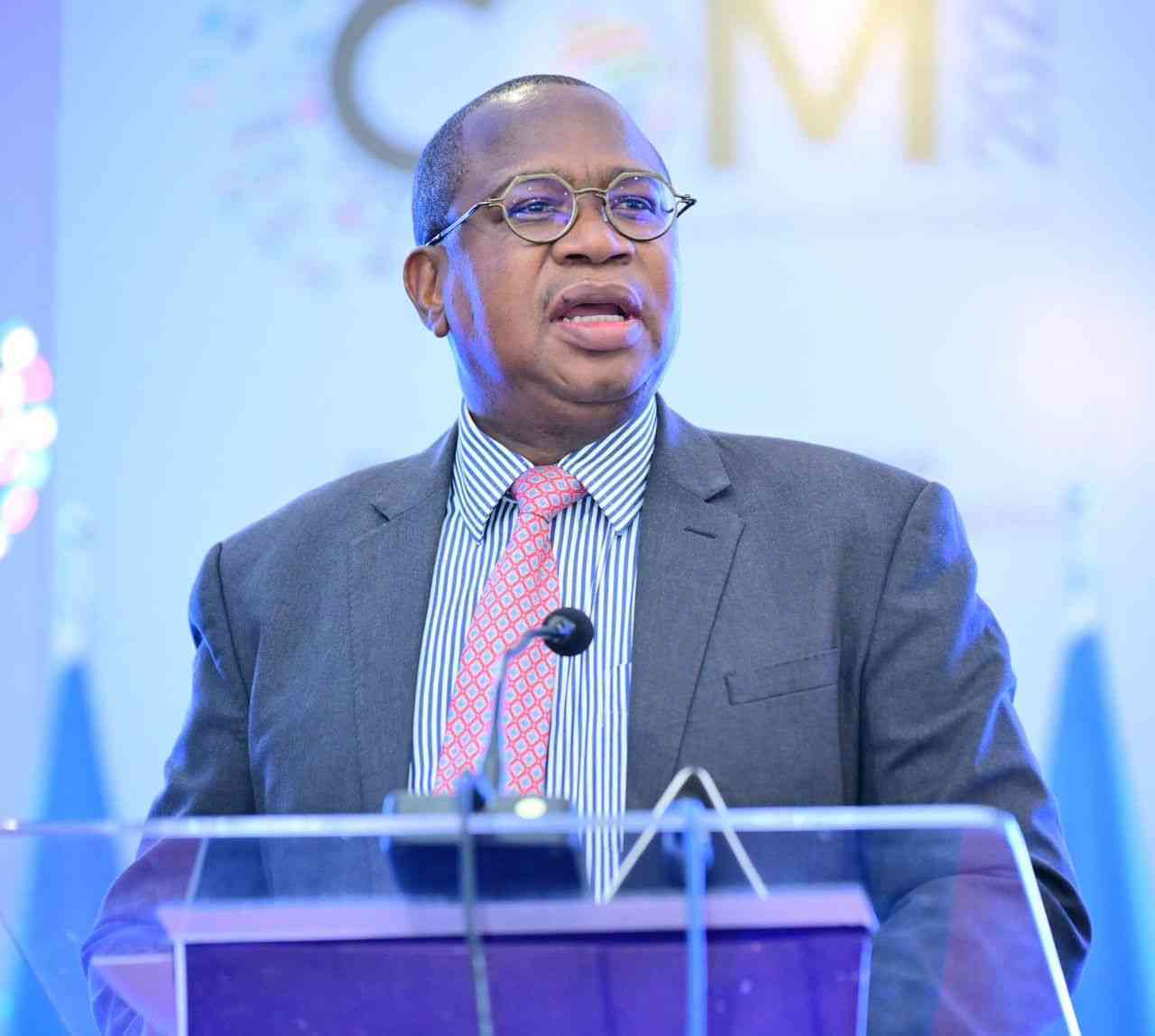
I am no feminist and have been critical about the women’s movement, but I believe the discussion of privilege, power and ascent as we reframe male privilege in the context of the women’s movement is long overdue. Therefore, defining the terrain has to be a necessary starting point.
Male privilege refers to a systemic set of advantages conferred on people identified as male within social, political, economic and cultural institutions. These advantages often operate invisibly, embedded in norms, laws and practices that normalise male leadership, risk tolerance and profit orientation.
The women’s movement, by contrast, is a broad historical and ongoing effort to dismantle gender-based barriers, secure equal rights, expand opportunities and redefine norms around work, family and leadership. It is not a monolith.
It encompasses campaigns for suffrage, workplace equality, reproductive rights, violence prevention, pay equity and inclusive leadership pipelines. Juxtaposing these two forces reveals the tension between entrenched structures that have historically concentrated power and the movement’s push to broaden access, disrupt bias and reimagine how decisions are made.
Manifestation of male privilege
What, then, is male privilege, and where does it manifest? Evidence of privilege appears in the persistent gap between men’s and women’s representation at the highest echelons of power.
For example, the boards of private sector companies, boards of state-owned enterprises, C-suites and other top tier leadership tracks, despite decades of feminist activism and policy efforts.
Even as more women enter professional spheres, pay gaps endure, promotional hurdles persist and sponsorship often remains concentrated within male networks.
- Spending pressures could mount this year
- Number of female politicians set to drop
- Political polarisation affecting the way women politicians work in Parliament
- August 2023 election: Zim’s women battle to break political glass ceiling
Keep Reading
Social norms reward risk-taking and assertiveness in men, while women exhibiting similar behaviours may incur penalties related to femininity or perceived aggression.
Informal networks and sponsorship which are crucial conduits for advancement, tend to flow through circles that are predominantly male, thereby creating advantages that are not always visible in formal structures.
Cultural associations of leadership and authority with masculine traits also confer quicker perceived legitimacy on male identified leaders, independent of objective performance.
Role of women’s movement
The women’s movement seeks to redefine what counts as leadership and how opportunity should be allocated. Its goals are multifaceted: achieving equal pay for equal work, expanding representation and creating career pathways that reduce the penalties associated with caregiving.
It also involves rethinking work-life integration, in particular how parental leave, flexible work arrangements and organisational expectations shape career trajectories. Crucially, the movement recognises that gender inequality intersects with race, class, sexuality, disability and immigration status.
Consequently, contemporary feminism emphasises intersectionality, coalition building and the reform of institutions to ensure progress is inclusive rather than siloed.
There is considerable overlap between the two currents, particularly around the shared aim of ensuring fair opportunity, equitable treatment and economic security for all workers. Yet tensions inevitably arise in the practicalities of reform. How should merit be balanced with equity? When do policies such as quotas or enforced diversity accelerate change and when do they risk signalling tokenism or undermining merit based advancement?
A provocative aspect of the discourse concerns “bottom power”, a form of strategy in which individuals, particularly female, seek advantage through unorthodox methods that may blur ethical lines. Such dynamics raise important questions: when do social tactics cross into exploitation, coercion, or the reinforcement of harmful norms?
How can organisations reward genuine merit while safeguarding against coercive or manipulative practices? And what role does mentorship and sponsorship play in mitigating or magnifying these dynamics?
To reframe the debate, it is helpful to treat privilege as structural rather than a property of individuals. Privilege arises from laws, policies, organisational norms and cultural narratives that shape who is believed to be a legitimate leader.
Accountability mechanisms such as transparent compensation, standardised promotion criteria, bias audits, and diverse decision-making bodies, are essential to uncover and temper privilege-driven advantages. Recognising privilege can be discomforting for those who benefit from it, yet such awareness catalyses advocacy for systemic changes that expand opportunity without erasing merit.
A closer look at the dynamics of power, profit, and “impenetrability” helps explain why certain sectors remain resistant to change. In some industries, power is concentrated among a small cohort of decision-makers, often males and sometimes a few co-opted patriarchal women, who then become gatekeepers to exclude other women — whose authority yields outsized profits and stability.
This concentration creates formidable barriers to entry for outsiders, especially when the incumbents’ reputational capital and risk tolerances align with the status quo. Reform becomes possible through a combination of incremental and bold governance that includes, incremental changes such as transparent pay structures and unbiased promotion criteria, alongside targeted, sometimes mandated reforms that accelerate diversification of leadership.
From a leadership and thought leadership perspective, several pathways emerge as follows:
First, organisations should design equitable systems rather than merely creating equal opportunities. This includes leadership development programmes that are accessible regardless of gender or background, standardised promotion criteria with regular bias audits and transparent compensation practices benchmarked against external standards.
Second, inclusive networks must be cultivated and those benefitting from the privilege must spearhead inclusivity. Cross-gender mentorship grounded in skill development, coupled with sponsorship programmes that advocate for advancing high-impact contributors, based on measurable outcomes, could widen the circle of opportunity without resorting to gatekeeping. This will work in organisations whose culture is enabling and constantly in transformative mode.
Third, merit and equity should be reconciled in a broader, holistic sense of leadership. Merit need not be narrowly defined by traditional displays of decisive leadership — it can encompass collaboration, mentorship, reliability and ethical governance. By broadening the archetype of effective leadership, organisations will be able to cultivate a more resilient and innovative culture.
Addressing “honey pot” dynamic
Addressing the “honey pot” dynamic requires explicit attention to ethics, consent and governance. Clear codes of conduct for professional networking, confidential reporting channels and independent review mechanisms for coercive or inappropriate advances are essential.
This is easier said than done. Incentive structures should align with ethical behaviour and collaborative leadership, rewarding practices that expand opportunity while maintaining integrity.
Intersectionality must be central to policy design. Recognising how race, class, sexuality, disability and immigration status shape privilege and access ensures that reforms address multiple, overlapping forms of marginalisation rather than offering one-size-fits-all solutions.
Render male privilege contestable
What, then, is the ultimate aim of reframing male privilege in this way? Because it is an intangible and therefore very difficult to prove, it is impossible to erase male privilege as a concept, but it can be rendered contestable and navigable.
When privilege is understood as a systemic feature rather than a fixed personal trait, leadership becomes more democratised, creativity is unlocked and organisational resilience improves.
This shift requires evolving the definition of leadership itself: that is, moving away from a single, archetypal model toward a spectrum of capable, ethical and diverse leadership styles. By doing so, organisations reduce the fragility of systems that depend on a narrow cohort of insiders and cultivate a culture where merit, ethics and diverse perspectives drive superior outcomes.
Conclusion
In closing, the thought leadership question worth pursuing is this: if male privilege serves as the conventional gatekeeper to power and access, what governance models, cultural norms and incentive structures can we adopt to ensure leadership is accessible, accountable and aligned with the broader aim of equitable and sustainable success?
The answer lies in designing institutions that reward merit in its broadest sense, foster inclusive networks that amplify diverse voices and implement governance mechanisms that make inequities visible and remediable. Such an approach does not reject the gains of the past. It simply builds on them to create a more durable, innovative and just form of leadership for the future.
Ndoro-Mkombachoto is a former academic and banker. She has consulted widely in strategy, entrepreneurship, and private sector development for organisations in Zimbabwe, the sub-region and overseas. As a writer and entrepreneur with interests in property, hospitality and manufacturing, she continues in strategy consulting, also sharing through her podcast @HeartfeltwithGloria. — +263 772 236 341.











